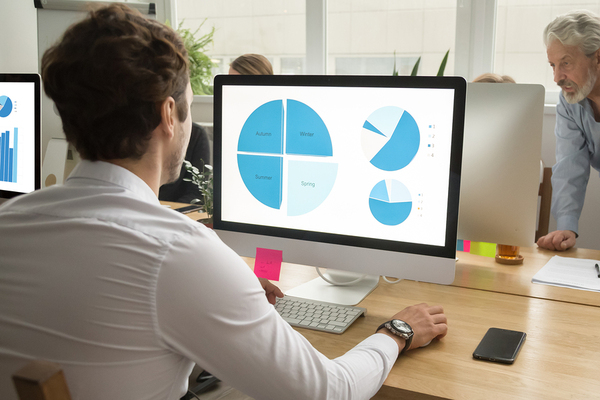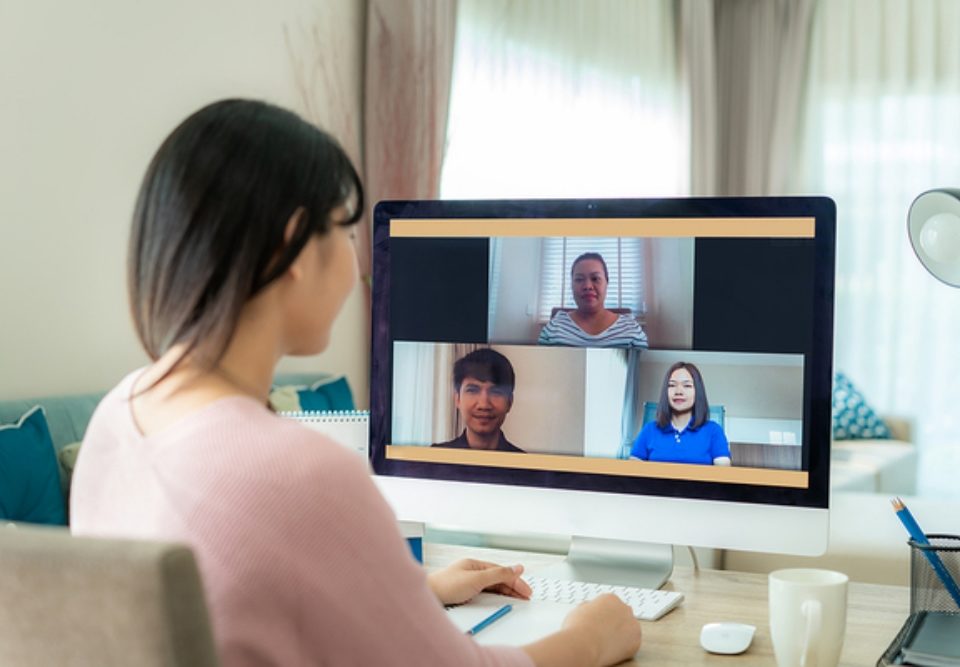The Gurdian: Online monitoring by employers will rise over the next decade
August 19, 2014Announcement: InterGuard adds Mobile Device Management
September 15, 2014Why You Need Employee Monitoring Software

Employee monitoring software can help your company improve security and prevent productivity loss and time theft. GPS tracking equipment and software can also help your company in some of the same ways. It can ensure that company resources aren’t misused, misappropriated, or lost, and it can also help you monitor your employee’s movements to ensure that they are where they are supposed to be when they are supposed to be there. This can have benefits for employee safety as well.
Employers should understand both the legal and ethical limitations to monitoring. When used appropriately, software can act as a form of insulation for the company and its employees; outside threats like malware, spyware and spear-phishing schemes can be detected and stopped before any damage is done to the company or its employees.
Benefits of GPS and Employee Monitoring
GPS tracking features ensure that your employees and their devices are where they’re supposed to be.
Everyone has had a run-in with the kind of employee who slacks off on the clock, takes overly long lunches, or uses work time to run errands and do other personal tasks. While this often doesn’t seem like a big deal, it can add up to a lot of lost time over a period of time, and many people don’t think about the waste of organization time and resources that occurs when employees repeatedly engage in these behaviors.
There are many use cases where GPS data can reveal a lot about employee behaviors. As an example, in Austin, GPS data was used to determine that a city code inspector spent hours of work time and put many miles on a city vehicle traveling outside of their work zone on personal business.
But it’s not just intentional employee misconduct that monitoring and GPS software could help with. Cars, computers, and cellphones can be stolen, and these tools can help locate these items after a theft or loss.
As useful as GPS and employee monitoring software can be, it’s not without its drawbacks. There are ethical considerations that should guide how the company uses the monitoring software; the most important takeaway is that no employee should feel that software is being used covertly. Disclosing monitoring in an employee handbook or in other written communiques ensures that everyone understands what is being tracked and why. Let’s delve deeper into the ethical issues related to monitoring.
The Ethics of GPS and Employee Monitoring
It’s important to use GPS monitoring in a way that’s not overly invasive of your employees’ privacy.
Some employees may object to being monitored, particularly if it intrudes into their lives outside of work. This can happen, for example, when you require an employee to carry a business phone with GPS tracking even during their off-hours, or when you install employee monitoring software into an employee’s personal devices rather than just company-issued devices.
These are legitimate concerns. Employees should be allowed to have a private life outside of work without being tracked or monitored. What’s more, monitoring and GPS apps can take up space, drain battery life, and slow down processing speed in some devices, and employees may resent it if their personal smartphone doesn’t work as well as they want it to because of a work-related app.
Improving the data security in your workplace is a great New Year’s resolution, and employee monitoring software is a good way to do that. But if you’re planning to implement new employee monitoring practices in 2019, it’s important for you to do that responsibly. Take a look at some of the steps you can take to ensure that your monitoring practices are helpful for your business without going overboard or compromising your employees’ privacy.
Establish a Clear Monitoring Policy
Make sure that you and your employees both understand the specifics of your employee monitoring policy.
Transparency is the key to collecting and using data responsibly. It’s important to create a monitoring policy that makes sense and meets your needs, and then make sure that the employees who will be monitored are fully aware of when and where they’ll be monitored, as well as the reasons why they need to be monitored.
Employee monitoring can be a contentious issue in the workplace, and for understandable reasons. No one likes to feel as if they’re being spied on or mistrusted. But giving clear reasons for the monitoring, and providing details on when and where exactly monitoring will be used, can address employee concerns before they have a chance to become more serious. Have employees sign a statement saying that they’ve received information and training about your employee monitoring practices. This helps ensure that everyone is on the same page from the start.
Be Selective About The Data You Collect
Employee monitoring software is capable of helping you collect a large amount of data, but you don’t necessarily need all of it. Good employee monitoring software is customizable – you can collect the data you need and not any superfluous information.
For example, you can choose to receive data only when an employee accesses sensitive information or tries to access restricted areas of the network, or you can set your system to redact and avoid capturing personal data input by an employee when you don’t need to have that data to begin with. Not only does this reduce the risk of invading employee privacy, but it also reduces the burden on you to protect personal data if you don’t collect unnecessary personal data to begin with.
Consider Pseudonymizing Data
Avoid singling out individual employees when you don’t need to.
In addition to protecting sensitive data and making your network more secure, employee monitoring systems can be used to provide you with information about important business metrics, like productivity. This is often what concerns employees, who may fear being micromanaged in addition to worrying about their personal data safety, and this is where employers may sometimes overstep their boundaries.
In some cases, you can avoid problems by pseudonymizing the data. That way you can observe overall trends in your business and address them without singling out any one person or digging too deeply into an individual employee’s data.
Using employee monitoring software responsibly ensures that you’ll be able to get the information you need without causing other problems for your business or for your employees.
While we covered the ethical issues related to monitoring, there are legal issues, too, that all companies should understand.
How to Approach GPS and Employee Monitoring At Your Company
All-in-all, the benefits of GPS and employee monitoring software often outweigh the drawbacks, especially when you take steps to eliminate and minimize those drawbacks. It’s possible to implement employee monitoring and GPS tracking without unduly invading your employees’ privacy or inconveniencing them.
Start by familiarizing yourself with the laws that apply in your area, and in the areas in which your company operates. Be sure that you’re complying with any state and local guidelines. Next, make sure that you’re being transparent with your employees. Let them know, in writing, what you’ll be monitoring, when they’ll be monitored, and what kind of information you’re hoping to get. Avoid apps or software that can’t be turned off during non-work hours, and stick to company-issued devices as much as possible.
If you’re considering installing employee monitoring software at your company, you should be prepared for the possibility that your employees won’t be happy. Understand that employee monitoring is something of a sensitive subject in many workplaces, and employees tend to react negatively if they feel that they’re being spied on or treated like children. However, employee monitoring can actually have positive benefits for employees as well as for the company. Making sure that your employees are aware of the ways in which employee monitoring software can improve their experience at work can help smooth the transition and keep employee morale high.
Here are three key benefits that monitoring can provide employees:
Monitoring Helps Provide Immediate Feedback
Employee monitoring software can help your employees get necessary feedback quickly so that they can adjust and improve.
Not every employee is going to use their devices perfectly every time, even when they’re being monitored. But with employee monitoring software in place, employees can receive immediate feedback when they make a mistake, and be given the opportunity to correct themselves right away.
Without monitoring software, some mistakes might never come to light, and some may only be discovered over time. For your employees, this may sound preferable at first, but it means that your employees may continue to make more serious mistakes that could reflect badly on their chances for promotions or raises, or even their continued employment. The capability of immediate feedback can prevent more serious mistakes by allowing employees to correct and improve themselves right away, and that improvement can help them show that they’re valuable to the company and deserving of more responsibility or increased compensation.
More Flexible Working Conditions
Employee monitoring software opens up the possibility of working from home or away from the office.
With employee monitoring software in place, you should feel comfortable allowing your employees to work from home or on the go more often. The inability to monitor productivity is often a barrier to allowing employees to work remotely, but once you’ve installed employee monitoring software, you can continue to monitor your employee’s productivity no matter where they’re working from.
This means that you may be able to offer your employees new options when it comes to how and when they can perform their work. For many employees, device monitoring will seem well worthwhile if it allows them more flexibility in arranging their working hours.
Monitoring Means More Protection For Employee Data
Preventing data security breaches is a big reason why companies choose to use employee monitoring software. What many employees don’t realize is that when they’re using personal devices for work or work devices for personal reasons, they’re putting their own sensitive information at risk as well. Malware sent through an employee email could expose employee data as well as company data.
By forcing employees to separate their personal and work devices, employee monitoring software helps ensure that both the company and the employee stay safer and more secure. Separating personal and work devices is important as outside threats could target employees and put the company at risk.
Using Employee Monitoring Software to Spear-Phishing
Although it’s common for data breaches to come from inside the company, it’s not that most employees want to compromise your network. It’s easy for outsiders to target trusted employees inside of your company, tricking them to giving up sensitive information. One way to do that is with a type of attack called spear-phishing. It’s important to be aware of spear-phishing tactics and how you can guard against them.
What is Spear-Phishing?
Spear-phishing attacks look and read like emails from a coworker or colleague.
If you’re internet-savvy, you may be familiar with phishing techniques. In a phishing attack, you might receive an email that looks at a casual glance like it’s from a trusted source – your bank, for example. Clicking on a link in the email may take you to a dummy page that’s set up to look like the login page for the same source. But when you fill in your username and password on the fake page, the phisher is able to collect those details and can use them to access your account.
Spear-phishing is similar, but more sophisticated and more narrowly targeted. Phishing attacks are often sent to a wide variety of people – all of your bank’s checking customers, for example – and can be detected by some email filters or just by close inspection.
A spear-phishing attack, on the other hand, might be an email sent to only one person and made to look like it comes from a source that’s both trusted and personal, like a business partner or a colleague. The email will often contain convincing personal information that helps convince the target that the email is legitimate. The target will be asked to click a URL, open an attachment, or provide sensitive information.
How Much Damage Can Spear-Phishing Do?
Spear-phishing attacks take more time and attention to detail than normal phishing attacks. Spear-phishers take time to gather information on their target and on the person they’re impersonating, often by scouring social media. They put the time and effort into creating a very convincing attack because they’re after valuable things, like trade secrets or a particularly large financial gain.
A skilled spear-phisher can do untold damage to your business. And because spear-phishing attacks can be so convincing, the losses can go on for some time before they’re noticed.
How to Protect Your Business using Employee Monitoring Software
Employee monitoring software adds another layer of protection to your business.
In order to protect your business from spear-phishing attacks, you’ll need to be prepared for them. Employees should be trained to be aware of spear-phishing, and to practice preventative measures, like typing URLs into their own browser rather than clicking on links and avoiding divulging sensitive information via email.
But spear-phishing works because it’s effective at convincing targets to bypass such security measures, so it’s also important to keep an eye on what your employees are doing and what kinds of emails they’re receiving. Employee monitoring software can give you an extra layer of protection and security.
Reasons your Company Needs Employee Monitoring Software
From protecting your company from lost or stolen devices, to identifying where you employees are going during work hours, to protecting data from spear-phishing attacks, there are innumerable benefits to using an employee monitoring software with a corresponding employee monitoring policy.
Once you start using employee monitoring, you can give your workers more flexible work conditions, protect your assets, and improve your company’s bottom line.
To learn more about how you can successfully use employee monitoring software to improve your company, take an online test drive.



